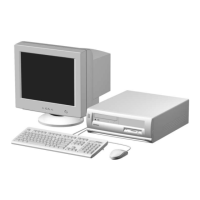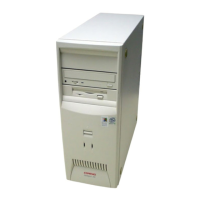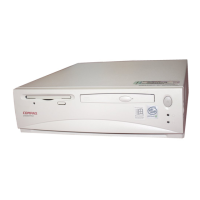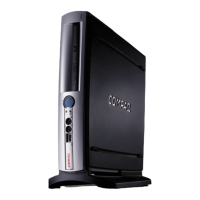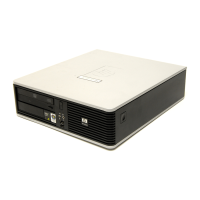Compaq Service Reference Guide F-3
Solving Minor Problems Continued
The Caps Lock LED is flashing; you
may hear one long and two short
beeps.
The video controller is not present or is incorrectly initialized. Clear
configuration memory (CMOS). If a video card has been added,
remove and reseat it.
Computer does not boot up and the
Scroll Lock LED is flashing; you may
hear two long and one short beeps.
System board hardware failure (prior to video). Replace system
board.
✎
If the standard keyboard has been replaced with a Universal Serial Bus (USB)
keyboard, you will hear the beep sequences mentioned above but will not see the
flashing lights.
Diskette Drive
Problem Possible Solution
Diskette drive light stays on. 1. Diskette is damaged. In Windows 95 or 98, run ScanDisk. Click Start
#
Programs
#
Accessories
#
System Tools
#
ScanDisk.
In Windows NT, right click Start, click Explore, and select a drive.
Select File
#
Properties
#
Tools. Under Error-checking, click
Check Now.
2. Diskette is incorrectly inserted. Remove the diskette and reinsert.
3. Software program may be damaged. Check the program diskettes.
4. Drive button is not pushed in. Push in drive button.
5. Drive cable is not properly connected. Reconnect drive cable.
Diskette drive cannot write to
a diskette.
1. Diskette is not formatted. Format the diskette.
2. Diskette is write-protected. Either use another diskette that is not
write-protected or disable the write protection on the diskette.
3. Writing to the wrong drive. Check the drive letter in the path
statement.
4. Not enough space is left on the diskette. Use another diskette.
5. Diskette write control is enabled. Check the Removable Media write
settings in Computer Setup.
Cannot format diskette. Invalid media reported. When formatting a diskette in DOS, you may
need to specify diskette capacity. For example, to format a 1.44-MB
diskette, type the following command at the DOS prompt:
FORMAT A:/F:1440
Diskette drive cannot read a
diskette.
1. Diskette is not formatted. Format the diskette.
2. Using the wrong diskette type for the drive type. Check the drive
type and use a compatible diskette.
3. Reading the wrong drive. Check the drive letter in the path
statement.
4. Diskette drive has been disabled by Computer Setup, Windows NT,
Windows 95, or Windows 98 utilities. Run Computer Setup and
enable the diskette drive.
Continued
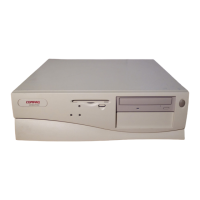
